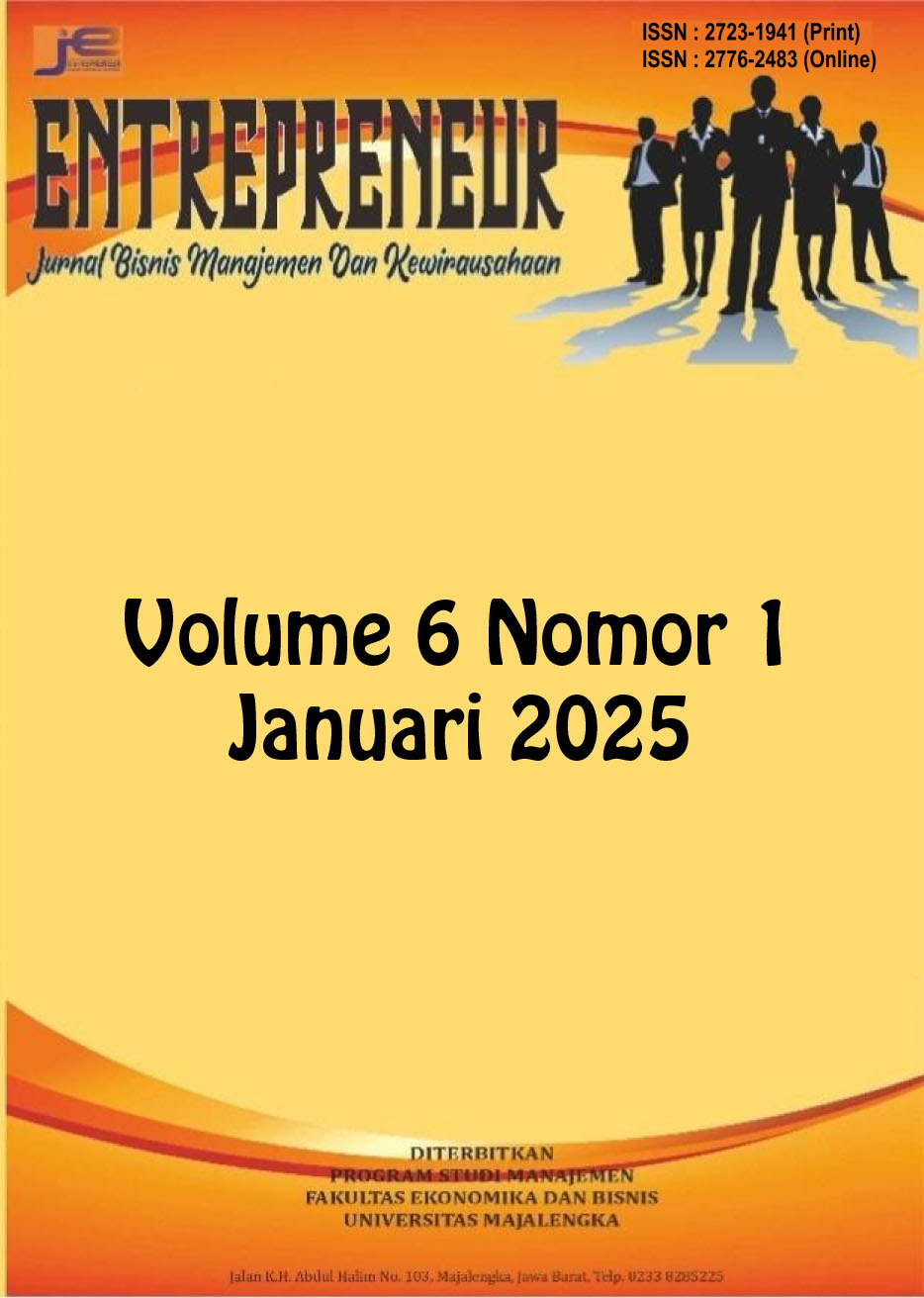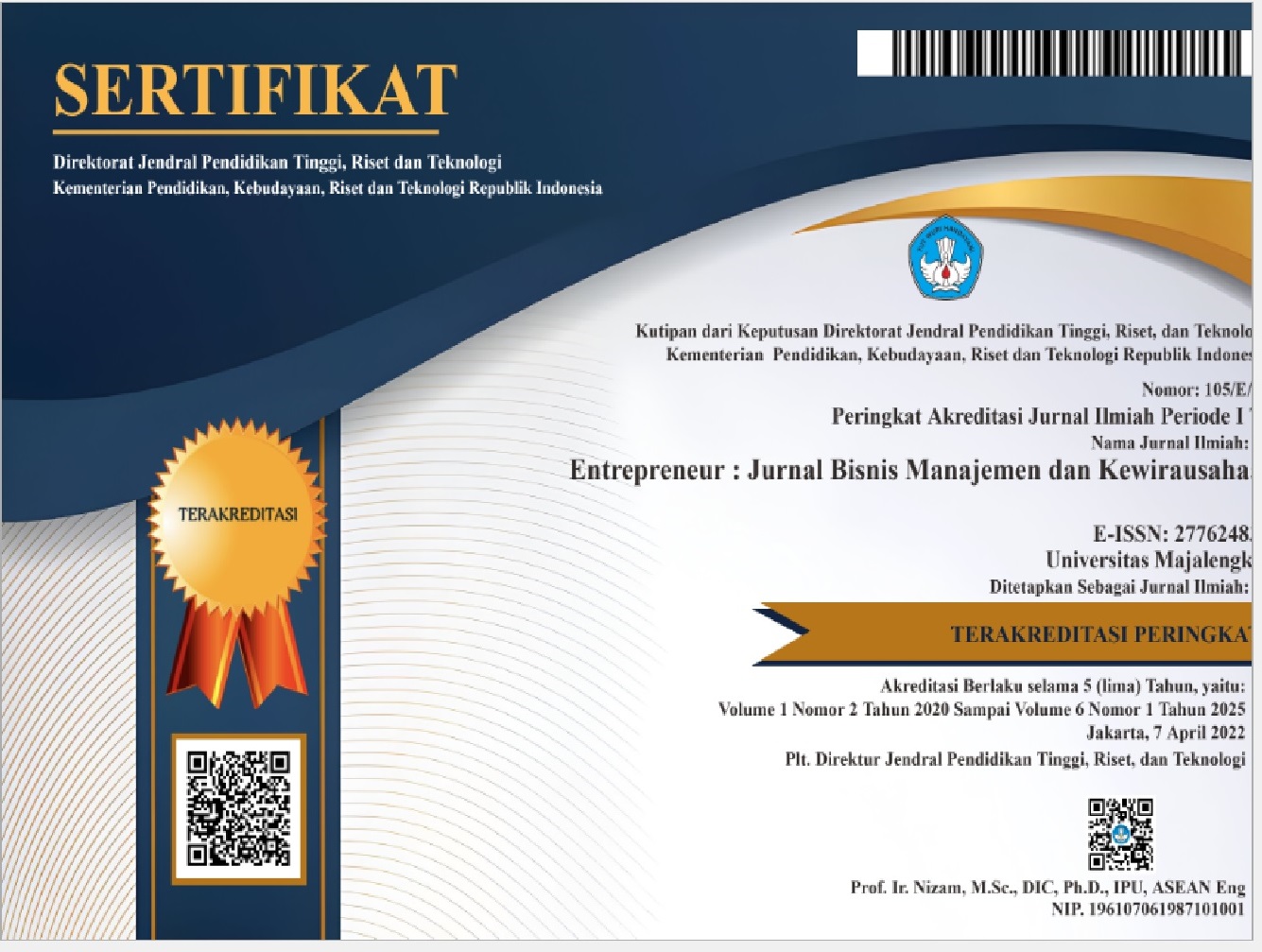Penerapan Pendekatan Pentahelix Dalam Upaya Pencegahan Terorisme Di Kelurahan Penatoi Kecamatan Mpunda Kota Bima
DOI:
https://doi.org/10.31949/entrepreneur.v6i1.12361Abstract
Terrorism is now a global threat that involves various aspects of life, transcends national borders, and has become a serious international crime. Indonesia, as a developing country, faces significant threats, especially through bomb terror acts in various regions. The terrorism movement is considered a major threat to humanity that needs to be addressed immediately. This study uses a qualitative method with informants including the village government, community leaders, security forces, and residents of Penatoi Village. Data collection techniques include observation, interviews, and documentation studies. The results of the study show that the strategic role of the village government in preventing terrorism is realized through the pentahelix approach, involving various elements such as Babinsa, Bhabinkamtibmas, religious leaders, and youth leaders. Efforts such as socialization, education on the dangers of terrorism, and provision of basic necessities have succeeded in changing the pattern of community interaction from exclusive to more open, even 80% of residents exposed to radicalism have re-pledged their loyalty to the Republic of Indonesia. Inhibiting factors for the pentahelix approach include budget constraints, dissatisfaction with government assistance, and the existence of underground movements. However, the support of former terrorist convicts as partners and cooperation between the government and various parties, including BNPT and the police, are significant supporting factors in preventing terrorism.
Keywords:
Pentahelix, prevention, response, terrorismDownloads
References
Ahmed, S., Belanger, F., & Szmania, S. (2018). Preventing Radicalization and Terrorism: Examining the Role of Information and Communication Technologies. Journal of Strategic Security, 11(3), 45–65.
Alimi, E. Y., Demetriou, C., & Bosi, L. (2015). Dynamics of Radicalization: A Relational and Comparative Perspective. Oxford University Press.
Badan Nasional Penanggulangan Teroris. (2022). Strategi Nasional Penanggulangan Terorisme dan Pembangunan Kawasan Terpadu Nusantara. BNPT Press.
Darmawan, A., Putra, H. R., & Sari, M. P. (2020). Penerapan Model Pentahelix dalam Pencegahan Terorisme di Indonesia. Penerbit Nasiona.
Endang Turmudi, R. S. (2005). Islam dan Radikalisme di Indonesia. LIPI.
Friedmann, W. (1969). Law in a Changing Society. University of California Press.
Harapan, U. P., Boulevard, J. M. H. T., Dua, K., & Dua, K. (2020). Keterampilan Menjelaskan Guru untuk Membangun Minat Keterlibatan Siswa dalam Pembelajaran Online. Jurnal Inovasi Penelitian, 1(7), 1245–1252.
Krueger, A. B., & Malečková, J. (2003). Education, Poverty, and Terrorism: Is There a Causal Connection? Journal of Economic Perspectives, 17(4), 119-144.
Miles, M. B., & Huberman, A. M. (1984). Qualitative Data Analysis: A Sourcebook of New Methods. SAGE Publication.
Neumann, P. R. (2013). The Trouble with Radicalization. International Affairs, 89(4), 873–893.
Nurdin, M., Rahmawati, T., & Yusuf, A. (2020). Pendekatan Multidimensi dalam Pencegahan Terorisme di Indonesia. Universitas Negeri Yogyakarta Press.
Prastya, I. Y., & Putri, N. A. D. (2017). Pengelolaan Sumber Daya Air di Daerah Kepulauan (Studi di Kota Tanjungpinang Provinsi Kepulauan Riau). Junal Ilmu Administrasi Negara, 5(2), 48–53.
Rahardjo, D. (2021). Peran Masyarakat dalam Program Deradikalisasi di Indonesia. Gadjah Mada University Press.
Ramdhan, M. (2021). Metode Penelitian. Cipta Media Nusantara.
Sanjaya, I. P. (2017). Terorisme: Ancaman Global dan Strategi Penanggulangannya. Gramedia Pustaka Utama.
Schmid, A. P. (2005). Terrorism as Crime: From Domestic Law to International Justice. Transaction Publishers.
Schmid, A. P. (2013). Radicalisation, De-Radicalisation, Counter-Radicalisation: A Conceptual Discussion and Literature Review. International Centre for Counter-Terrorism.
Sudarmo, T. (2018). Sinergi Pentahelix untuk Ketahanan Nasional. Gadjah Mada University Press.
Sugiyono. (2018). Metode Penelitian Kuantitatif, Kualitatif, dan R&D. CV. Alfabeta.
Sugiyono. (2019). Metode Penelitian Kuantitatif, Kualitatif, dan R&D. Bandung. CV. Alfabeta.
Susanto, R., & Arifin, M. (2022). Kontribusi Media dan Dunia Usaha dalam Pembangunan Kawasan Terpadu Nusantara. Universitas Airlangga Press.
Widodo, B. (2022). Strategi Kolaborasi untuk Penanggulangan Terorisme Berbasis Pentahelix. Alfabeta.

Published
How to Cite
Issue
Section
License
Copyright (c) 2025 Burhan, Suparman, Supriadi

This work is licensed under a Creative Commons Attribution-ShareAlike 4.0 International License.
COPYRIGHT NOTICE
An author who publishes in the Entrepreneur: Jurnal Bisnis Manajemen dan Kewirausahaan agrees to the following terms:
1. Author retains the copyright and grants the journal the right of first publication of the work simultaneously licensed under the Creative Commons Attribution-ShareAlike 4.0 License that allows others to share the work with an acknowledgment of the work's authorship and initial publication in this journal
2. The author is able to enter into separate, additional contractual arrangements for the non-exclusive distribution of the journal's published version of the work (e.g., post it to an institutional repository or publish it in a book) with the acknowledgment of its initial publication in this journal.
3. The author is permitted and encouraged to post his/her work online (e.g., in institutional repositories or on their website) prior to and during the submission process, as it can lead to productive exchanges, as well as earlier and greater citation of the published work







